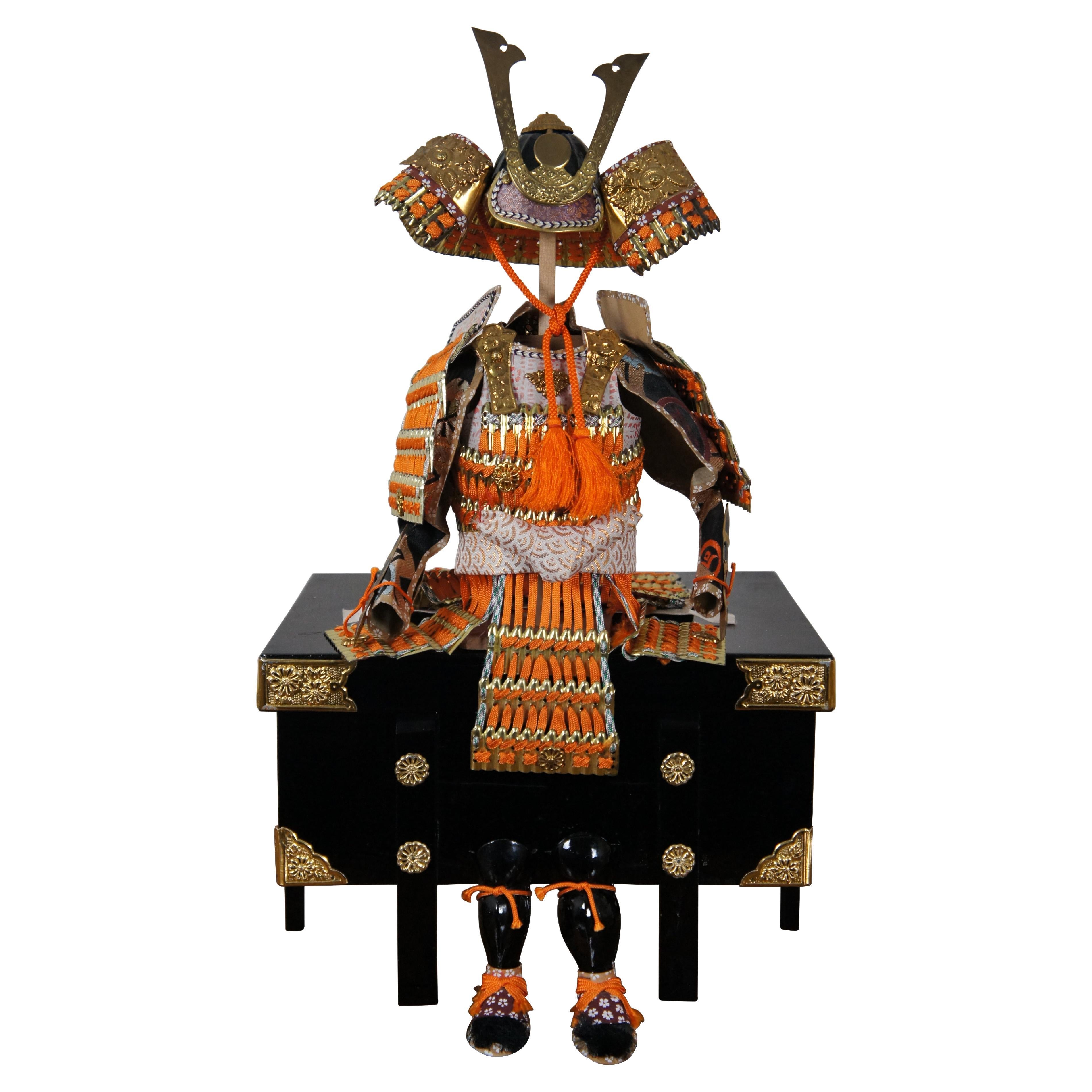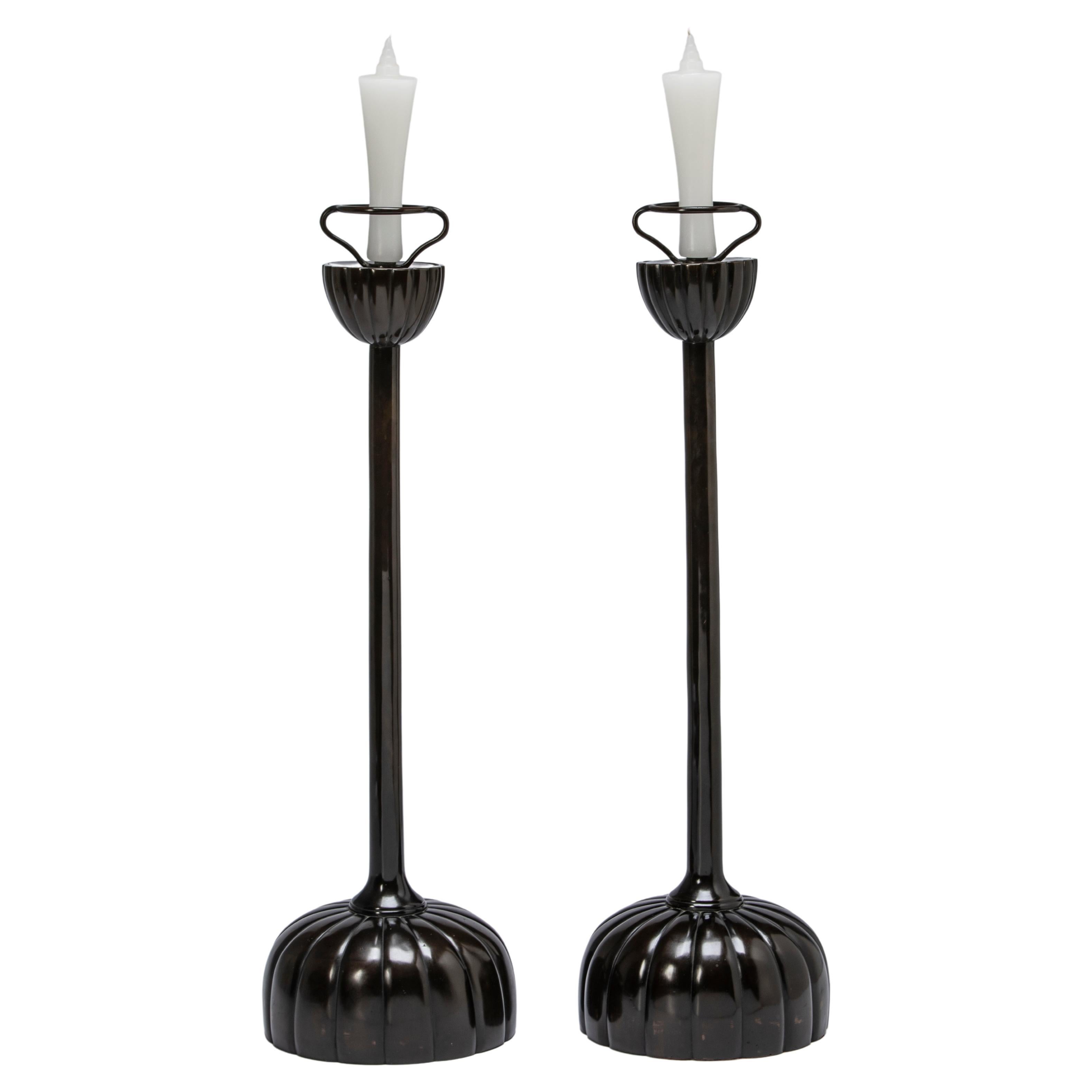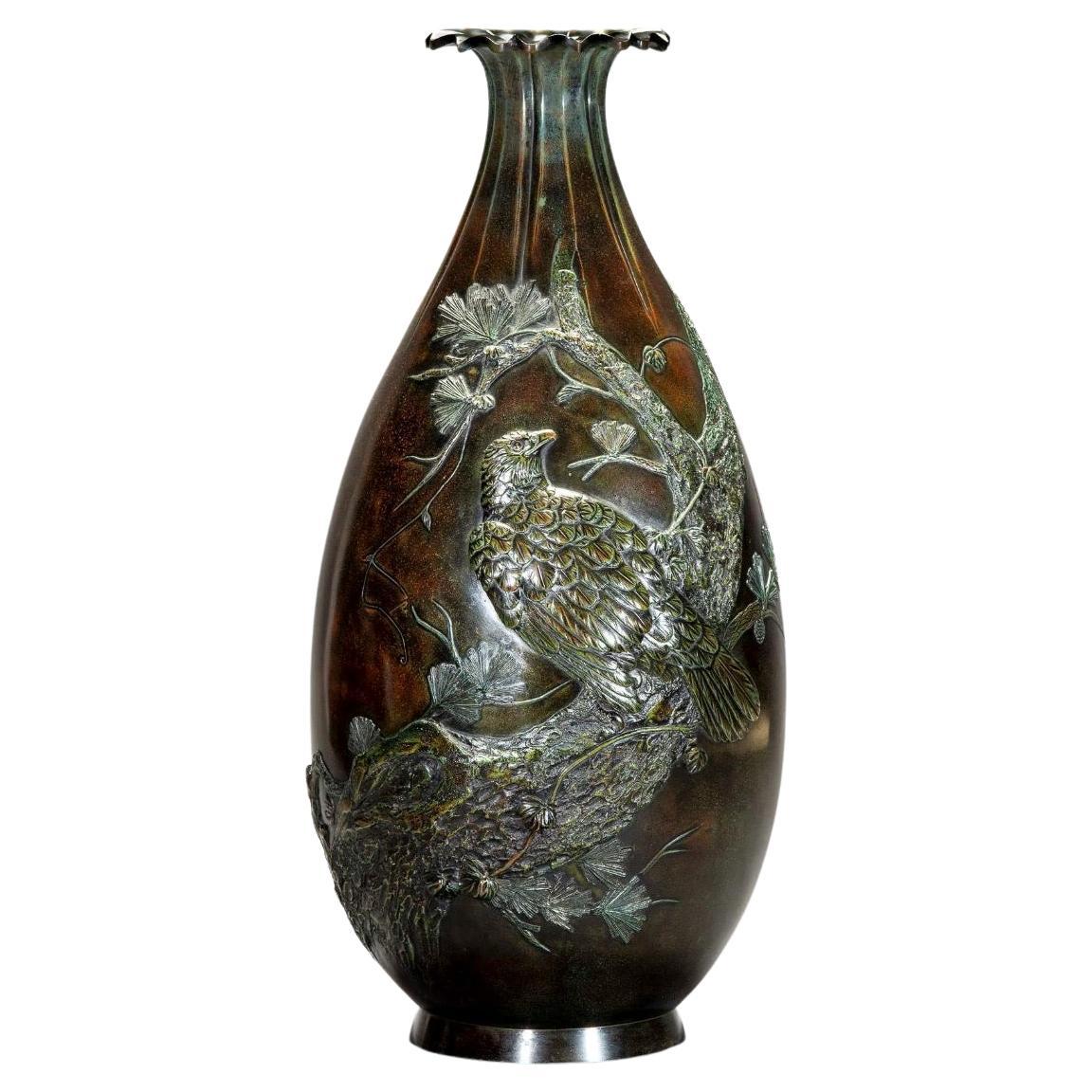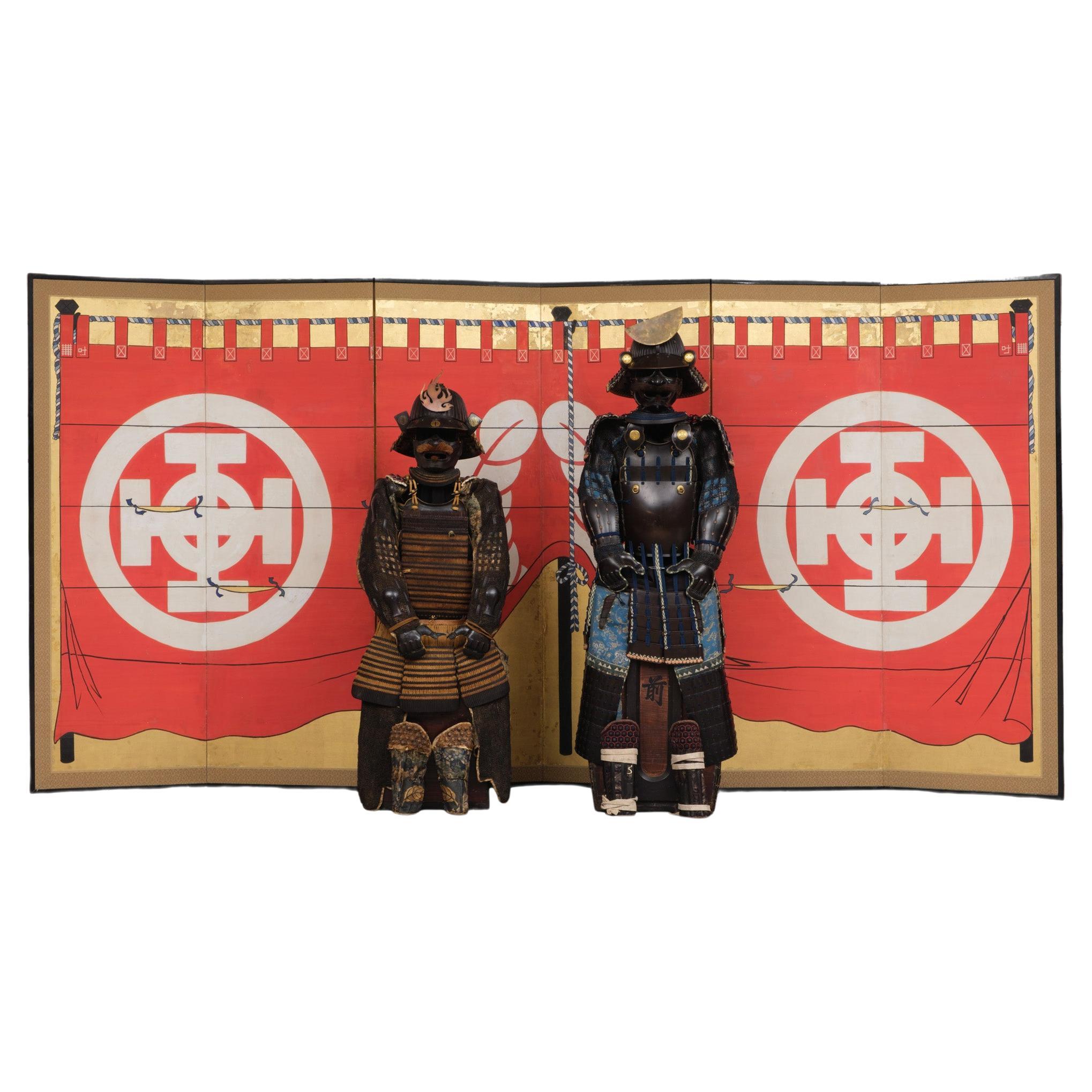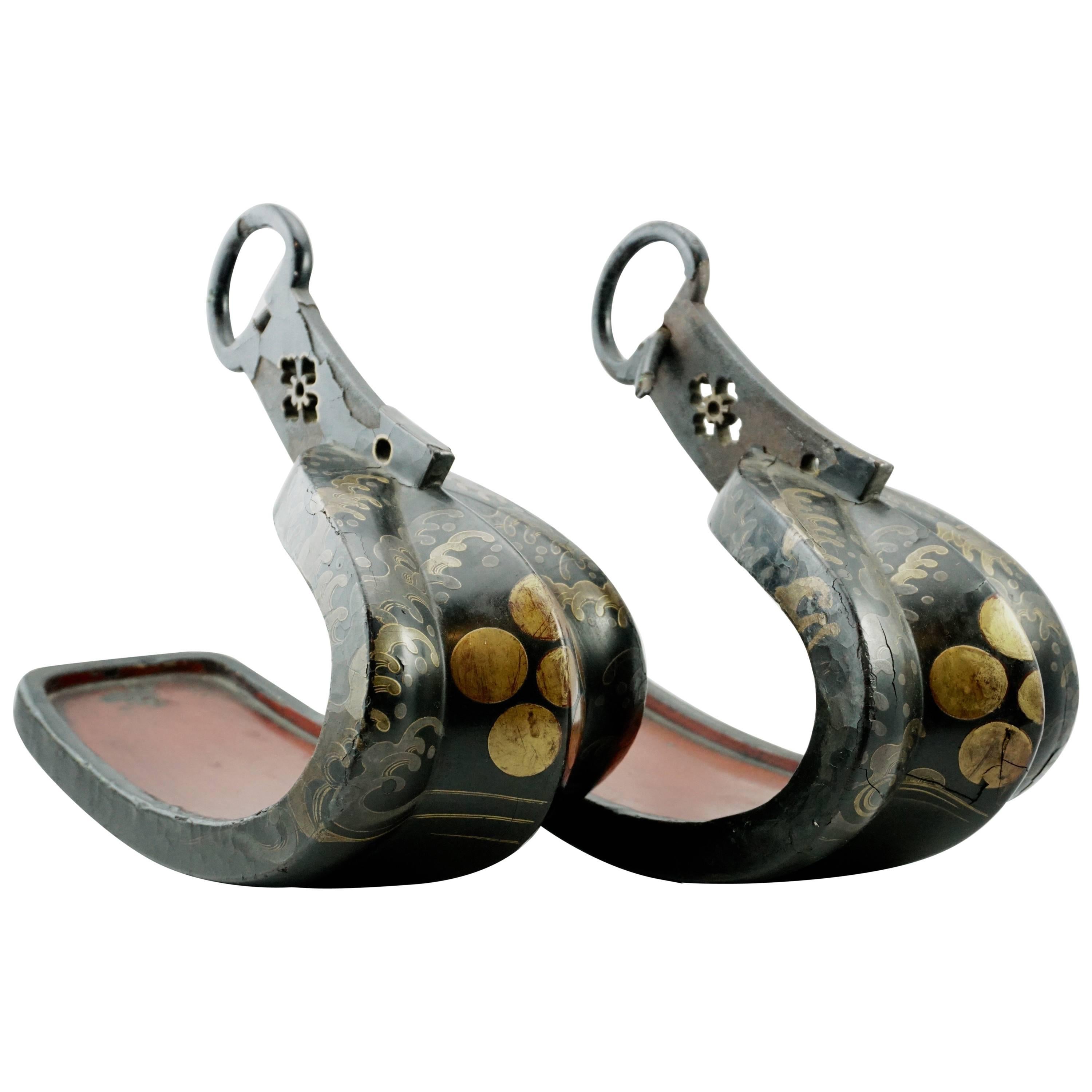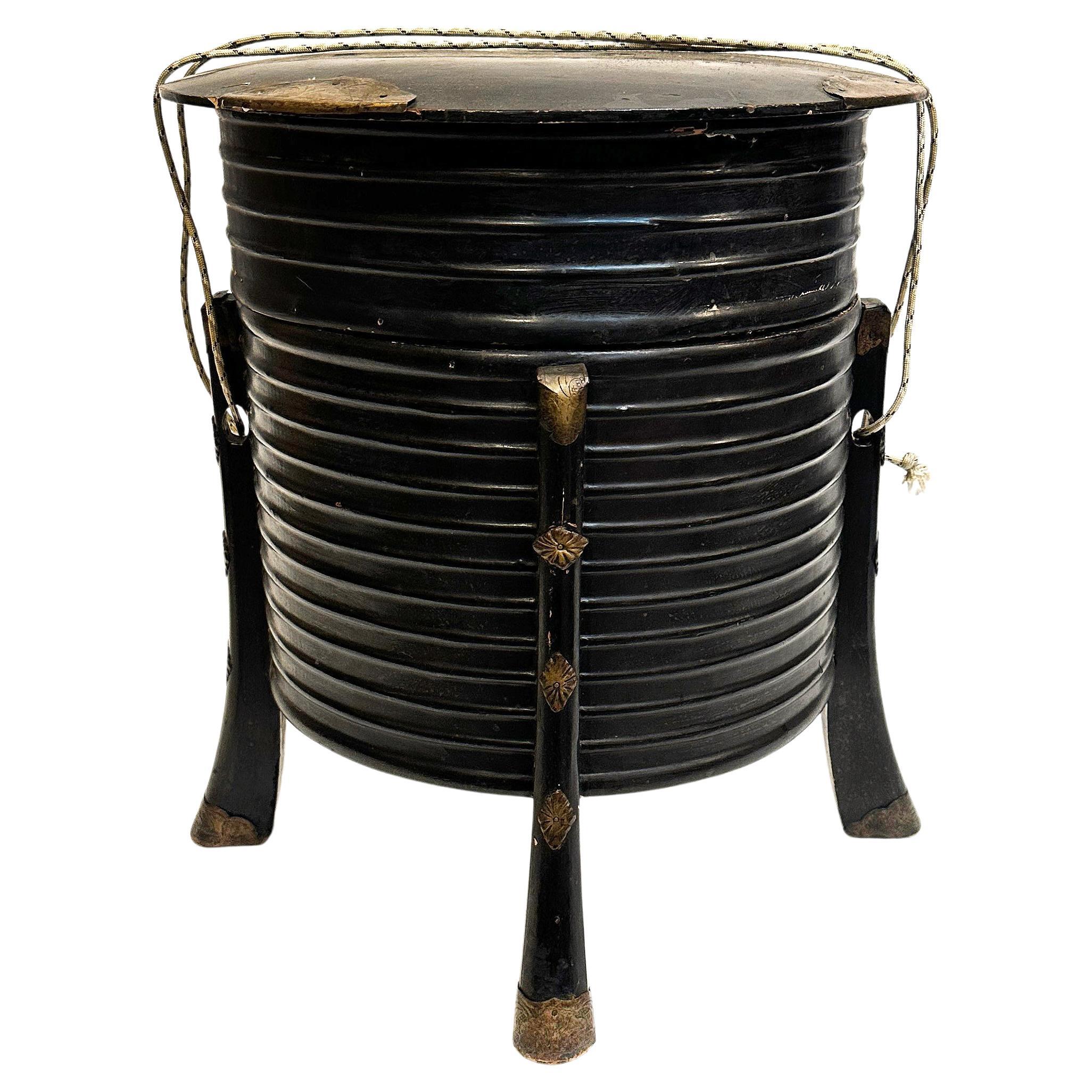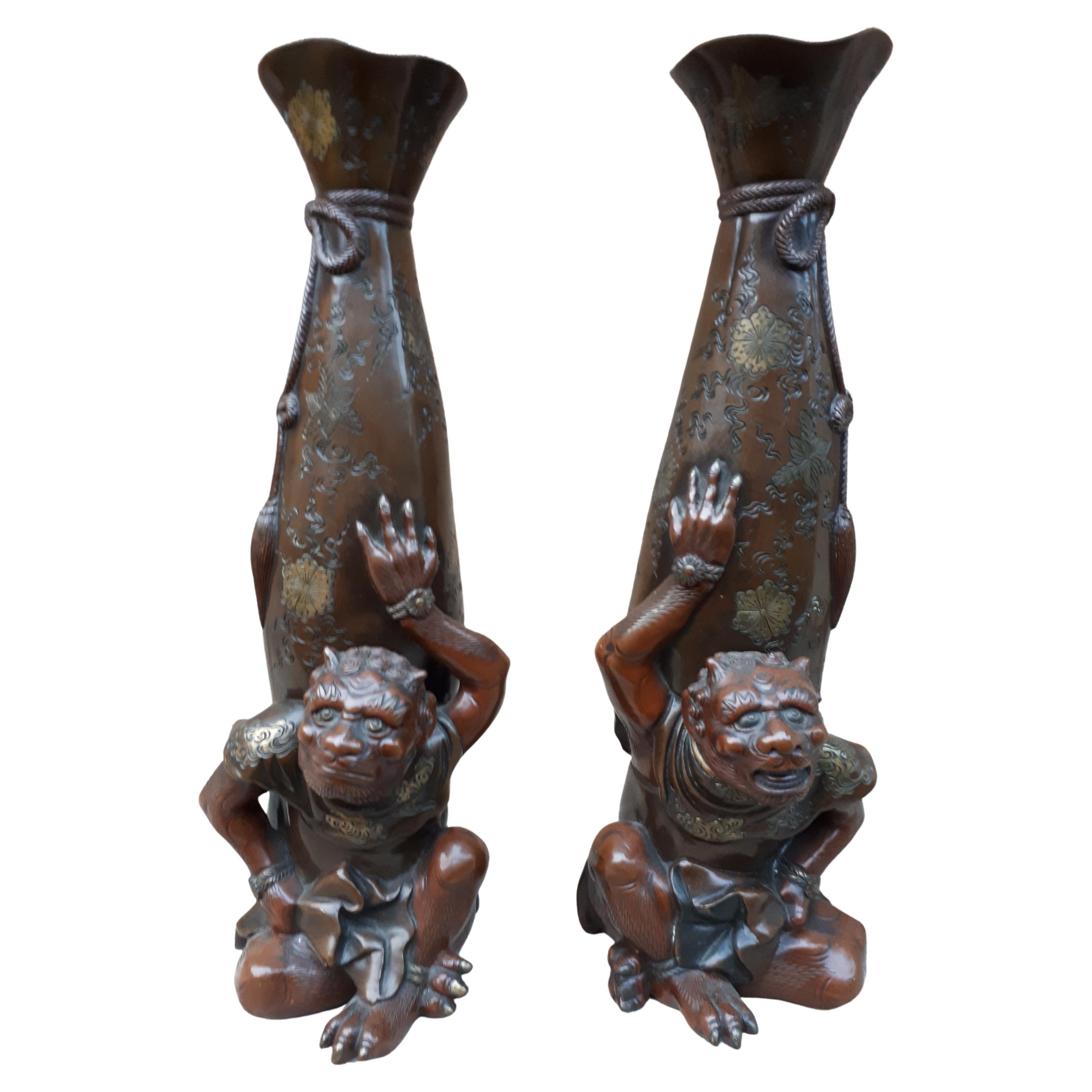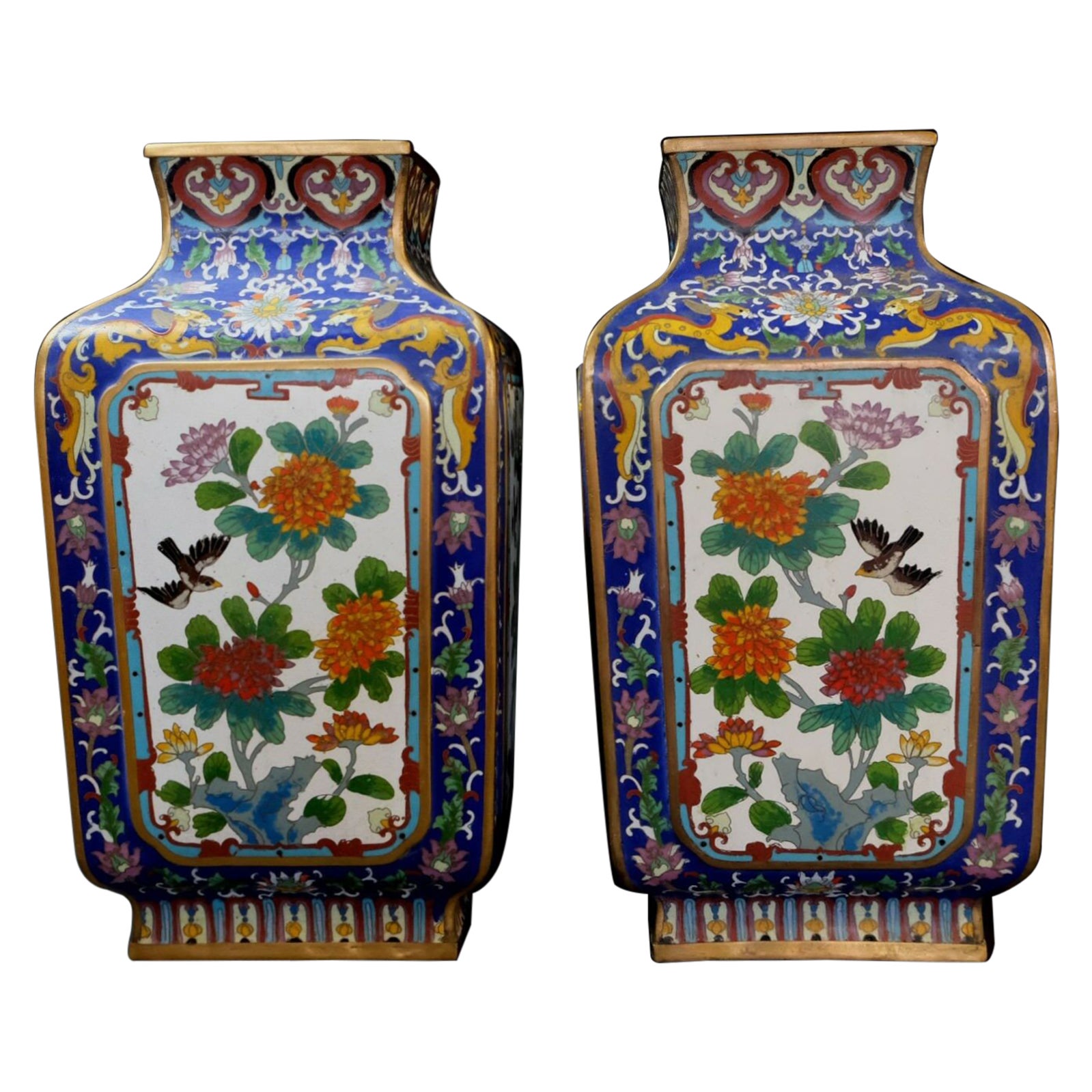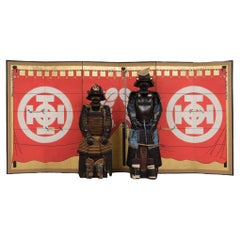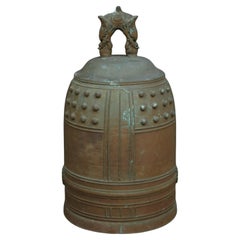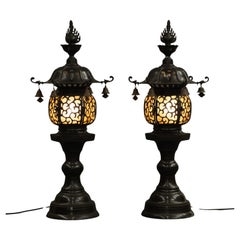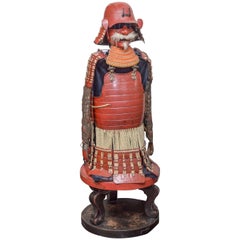
Japanese all-matching Japanese gold lacquer ô’yoroi (great suit-of-armour)
View Similar Items
Want more images or videos?
Request additional images or videos from the seller
1 of 21
Japanese all-matching Japanese gold lacquer ô’yoroi (great suit-of-armour)
About the Item
- Dimensions:Height: 63 in (160 cm)Width: 31.5 in (80 cm)Depth: 23.63 in (60 cm)
- Materials and Techniques:
- Place of Origin:
- Period:
- Date of Manufacture:Taishô period (1912-1926)
- Condition:Wear consistent with age and use. Considering its age in a very good original condition with minimal traces of age and wear, like some minimal lacquer loss. Helmet with one loose loop on the inside. Please look at the photos for a clear condition reference.
- Seller Location:Amsterdam, NL
- Reference Number:Seller: B25121stDibs: LU7165238187222
About the Seller
5.0
Vetted Seller
These experienced sellers undergo a comprehensive evaluation by our team of in-house experts.
Established in 1996
1stDibs seller since 2022
16 sales on 1stDibs
Typical response time: 10 hours
More From This SellerView All
- Rare set of 2 Japanese suits-of-armour, complete with 2 matching folding screensLocated in Amsterdam, NLImportant unique set of two suits-of-armour (yoroi), complete with two high six-panel screens, that belong together as is indicated by the used family crests (mon). Two crests are used, both belonging to the Nakagawa family of Oka Castle, Ôita prefecture on Kyûshû. They are: – the Nakagawa-kurusu, a circle depicting a Celtic-like cross through a ring. The cross was originally a Christian symbol but after the ban on Christianity in Japan the use of a hidden cross in family crests could continue. – the Nakagawa-kashiwa, two leaves of the Japanese Emperor Oak turned to each other (dakikashiwa mon). The remarkable aspect of this ensemble is the presence of matching crests on both the yoroi and the accompanying folding screens. The kurusu and kashiwa crests adorning the yoroi are elegantly replicated on the screens, providing compelling evidence that these pieces form a harmonious and unified set. This exceptional cohesion between the armour and screens further enhances their artistic and historical value. After the warlord Toyotomi Hideyoshi (1537-1598) had interfered in the battle between the Lord of Bungo Province Ôtomo Yoshi-mune (1558-1605) and the Shimazu of Hyûga Province, he split the Bungo Province in a number of small fiefs and transferred in 1594 Nakagawa Hideshige (1570-1612) from Miki Castle in the Harima Fief to Oka Castle in Kyûshû. The Nakagawa family stayed in possession of Oka Castle till the abolishment of the military use of castles in 1873. In 1884 the Nakagawa family received the title of Count (a title in use till the abolishment of aristocracy in 1947). After the Nakagawa’s left, the castle and the building soon dilapidated and is now known as Oka Castle Ruins. The castle is located in Taketa Village part of Taketa Town in Ôita Province on Kyûshû. > Set of two tall byôbu (folding screens), painted with large red jinmaku (camp enclosure curtain) on a gold leaf ground. The curtains show both crests of the Nakagawa family: one screen depicts two Nakagawa-kurusu crests next to a Nakagawa-kashi crest in the middle, and the other shows the symbols the other way round. Dimensions: Total width 148.66 in/377.6 cm (2 x 25.35 in/64.4 cm, 4 x 24.48 in/62.2 cm); Height 72.63 in/184.5 cm. Period: Japan – Late Edo period (First half 19th century), and maybe even older. > Yoroi with Nakagawa-kashiwa crest: A Japanese black lacquered suit-of-armour (yoroi) completely laced with orange cords (kuro’urushinuri hi’ito odoshi nimai’dô’maru). A thirty-two plate suji’bachi kabuto (helmet with raised ridges) with in front a maedate (fore crest) -with traces of gilding- in the shape of flames, resembling a mythical flaming bird flying down. The fukikaeshi (face guards) and the mabizashi (visor) have the Nakagawa-kashiwa crest in gold maki-e lacquer. Five curved ‘itazane’-plate neck guards (shikoro) laced with orange cords. Together with an ‘angry man...Category
Antique 18th Century Japanese Antiquities
MaterialsGold Leaf, Iron, Metal
- Heavy, Japanese bronze temple bell 梵鐘 (bonshô) of traditional shapeLocated in Amsterdam, NLHeavy bronze temple bell (bonshô) of traditional shape with an appealing echoing sound when struck. Its surface is a rich brown, complemented by a hint of light green aged patina. ...Category
Mid-20th Century Japanese Metalwork
MaterialsBronze
- Pair of large dark brown patinated bronze Japanese lanterns 灯籠 (tôrô)Located in Amsterdam, NLA pair of amazing, large dark brown patinated bronze Japanese electrified lanterns (tôrô). The pagoda-shaped top crowned by a hôju (sacred jewel...Category
Late 20th Century Japanese Metalwork
MaterialsBronze, Copper
- Japanese Bronze Okimono of a 'Karasu Tengu' 鴉天狗 Holding Up a Flower BranchLocated in Amsterdam, NLVery refined Japanese bronze okimono of a ‘karasu tengu’ holding a candlestick. Well cast as a tengu in half-human, half-bird form standing atop a pile of leaves on a rounded square...Category
Antique Late 19th Century Japanese Metalwork
MaterialsBronze
- Pair of Japanese High Quality Chôshi 銚子 'Sake Ewers', Signed 'Sei’ô' 晴王Located in Amsterdam, NLPair of high quality cast iron chôshi (sake ewers) with a detailed lacquered lid. Its body with a refined embossed design of a bird of prey (môchô) perched o...Category
Antique Late 19th Century Japanese Antiquities
MaterialsIron
- Japanese Red Patinated Bronze Vase by Nakajima Yasumi II 二代中島保美By Nakajima Yasumi IILocated in Amsterdam, NLExceptionally shaped bronze vase with a striking ‘coarse’-textured red mottled patina. The bowl subtly shaped like a flower, its slightly concave body flanked by ‘butterfly wing’-sha...Category
20th Century Japanese Metalwork
MaterialsBronze
You May Also Like
- Japanese Samurai Yoroi Kabuto Doll Suit of Armour Figure & Lacquer Box 22"Located in Dayton, OHVintage set of Japanese samurai doll armor in orange and gold, designed to perch on the edge of the black lacquer campaign style storage box with floral gilt metal corner pieces and ...Category
Late 20th Century Japonisme Sculptures and Carvings
MaterialsMetal
- Suit of Red Lacquer Japanese Fighting Armor of the Late Edo PeriodLocated in San Francisco, CASuit of red lacquer Japanese fighting armour of the late Edo period, (1716-1868). Desirable coral red lacquer is original and unrestored. Composed of a helmet, (Kabuto) breast plate (Do) and shoulder, arm protection (chainmail). Displayed with a later recreation expressive face plate of modern manufacture (nose, mustache). Also displayed with (photos 3 & 4) a period red lacquer partial face plate (Hambo) with replacement throat guards. All of the assembled parts are of same age, quality and color. Old silk and linen sleeve and helmet linings decayed or shredding. The Meiji period wood...Category
Antique 19th Century Japanese Metalwork
MaterialsIron
- Pair of Japanese Bronze/Black-Lacquer CandlesticksLocated in Santa Cruz, CAPair Japanese Bronze/Black-Lacquer Candlesticks Japanese Bronze/Black-Lacquer Candlesticks Sold as Pair Only. Japanese Shokudai Chrysanthemum B...Category
Antique Late 19th Century Japanese Meiji Metalwork
MaterialsBronze
$2,000 Sale Price20% Off - A Great Japanese bronze vase depicting a hawk, signed by Masayuki 正之Located in Milano, ITLarge bronze vase with greenish-reddish patina worked in relief depicting a hawk, head turned to the right, on a large branch that wraps around the vase at an angle from the bottom t...Category
Antique Late 19th Century Japanese Japonisme Metalwork
MaterialsBronze
- Pair of 18th Century Japanese Edo Period Lacquered Samurai Iron StirupsLocated in Dallas, TX18th century Japanese Edo period Lacquered Samouri Iron stirups with original wooden lacquered insoles. Truly a beautiful pair of Japanese ...Category
Antique Late 18th Century Japanese Edo Metalwork
MaterialsIron
- Pair of Japanese Edo Period Iron Silver Inlaid Red Lacquered Stirrups 'Abumi'Located in New York, NYA Pair of Japanese Edo Period (1603–1867) iron, silver inlaid, and red lacquered stirrups (Abumi). Each of typical form, made of iron with silver inlay on the front with floral bloss...Category
Antique 1690s Japanese Edo Metalwork
MaterialsIron, Silver
Recently Viewed
View AllMore Ways To Browse
Iron Kama
Asian Ceremonial Dagger
Japanese Cloisonne Incense Burner
Large Outdoor Incense Burner
Etched Indian Pot
Meiji Period Japanese Bronze Bird
Tibet Dagger
Two Large Khmer Foo Dogs
Meiji Era Bronze
Naga Sword
Silver Torcs
Antique Asian Bronze Chariot With Dragon Head
Antique Indian Spice Tin
Antique Kick Scooters
Asian Trumpet Shape Brass Vase
Bronze Koi Vase
Cloisonne Bowl And Tray
Rosenthal, Jacob & Co (J. Rosenthal & S. Jacob) On Sale
